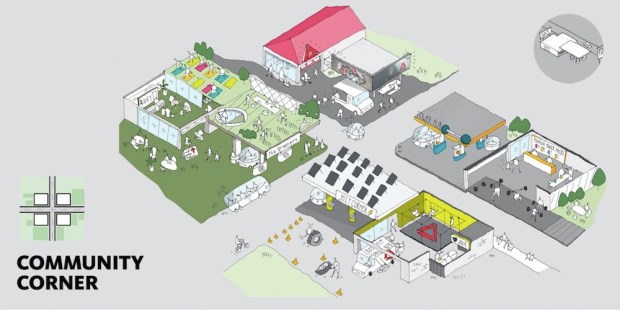Reebok Wants To Reboot Gas Stations For Fitness

Reebok wants to make the average gas station a healthier place. According to a post on its website, the fitness and athletic apparel company is trying to see if the future of gas stations can be as fit as electric cars, which are displacing their gas-guzzling counterparts.
To bring this vision to life, Reebok is working with global architecture and design firm Gensler on a new “Get Pumped” concept, which will create stations for filling up on physical well-being instead of gas.
“Reebok believes that we’re always training to be our best,” said Austin Malleolo, head of Reebok fitness facilities. “This design work with Gensler allows us to imagine a future where there is zero barrier to entry for an opportunity to work out and be healthy. Consumers may not need gas stations anymore, but instead of wasting them, we’re recycling them and maximizing the space so that they become places of community.”
The bigger goal, Malleolo noted, is not just repurposed gas stations, but instead a network of stopping points where commuters and consumers can easily drop in.
“We envision our cities of the future to have a network of fitness oases between home and work where you could stop and recharge more than just your car. Imagine an option to leave the traffic jam to unwind with yoga, get your CrossFit fix or pick up a green juice and your weekly farm share all in one place,” said Alfred Byun, designer at Gensler.
The two firms are experimenting with three concepts for the stopping point. “The Network” design is created to be “the power grid of the future,” where travelers can stop and generate energy through spinning, boxing, CrossFit and a running trails. (Quick note on that though: A human on a bike cycling for 30 minutes a day creates about 3 kilowatt hours over 30 days, less than 1 percent of the power an American household uses in a month. It’s a neat idea, but “power grid of the future” is probably putting too fine a point on it.)
The Oasis design focuses on larger gas stations for consumers to use as “recharge zones” that will include healthy food options, juice bars and meditation pods. There may or may not be outside herb gardens.
The final design is a community center, where the old gas station becomes a hub for all kinds of productive human activity — like nutrition classes, healthy food offerings and pop-up trucks for CrossFit and spinning classes.